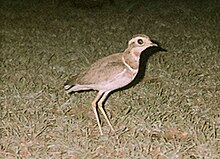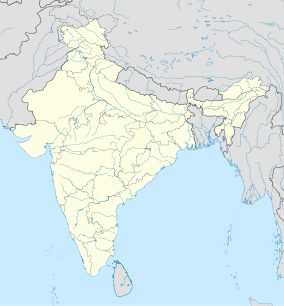Sri Penusila Narasimha Wildlife Sanctuary
| Sri Penusila Narasimha Wildlife Sanctuary | |
|---|---|
IUCN category IV (habitat/species management area) | |
| Location | Andhra Pradesh, India |
| Nearest city | Nellore, India |
| Coordinates | 14°0.55′N 79°27.83′E / 14.00917°N 79.46383°E[1] |
| Area | 1,030.85 square kilometres (254,730 acres) |
| Official website | |
Sri Penusila Narasimha Wildlife Sanctuary is a 1,030.85 km2 (398.01 sq mi) 1030.85 km² protected area in Nellore District of Andhra Pradesh state in South India. It comprises a unique and endangered forest type viz.[2][3]
Geography
[edit]Sri Penusila Narasimha Wildlife Sanctuary is located in Nellore District of Andhra Pradesh. It covers an area of 1,030.85 km2 (398.01 sq mi) is managed by the Andhra Pradesh Forest Department[2] Comprises a unique and endangered forest type viz. the dry evergreen forests. The wildlife sanctuary is characterized by hilly slopes, rolling forested hills, and low valleys.[citation needed]
Flora
[edit]Dry evergreen forest type with species like Accacias, Cassias, Pongamia, Carissa are found in the sanctuary.[citation needed]
Fauna
[edit]
Panther, Cheetal, Nilgai, Chowsingha, Sloth Bear, Jackal, Wild Boar, and large numbers of reptile and bird species are found in the wildlife sanctuary.[citation needed]
The sanctuary also holds a population of tigers[4] and leopards.[5] The sanctuary also hosts the endangered bird Jerdon's courser which is endemic to the region.[6]
References
[edit]- ^ "Sri Penusila Narasimha Wildlife Sanctuary". BirdLife International. Retrieved 2 August 2014.
- ^ a b "Sri Penusila Narashimawamy Wildlife Sanctuary". Andhra Pradesh Forest Department. Retrieved 2 August 2014.
- ^ "Sri Penusila Narasimha Wildlife Sanctuary". Globalspecies.org. Retrieved 2 August 2014.
- ^ Sudhakar, K. Madhu (8 November 2024). "Big boost to conservation of tigers in Andhra Pradesh's NSTR". The New Indian Express. Retrieved 14 December 2024.
- ^ Peri, Usha (8 March 2024). "State's leopard population increases from 492 in 2018 to 569 in 2022". The New Indian Express. Retrieved 14 December 2024.
- ^ "Central Deccan Plateau Dry Deciduous Forests". One Earth. 22 June 2022. Retrieved 14 December 2024.


